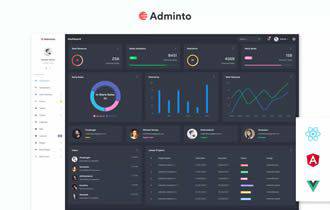Virtually every business out there has competition – and it can get heated. For example, consider automobile manufacturers. Think about all the money they spend trying to one-up each other in both product features and marketing. Must be quite a stack of cash, huh?
Web design, at least at the freelance and small agency level, doesn’t give off that same vibe. There may be dozens of design firms in a given geographic area. Yet, they’re more likely to take part in a collective meetup rather than attempt to publicly call each other out.
Why is that? For one, the web design industry is based in part on sharing. It’s a community of people who freely share code, resources and advice. The widespread use of open-source software only encourages this behavior.
That’s not to say that web designers aren’t driven to succeed. It’s just that they don’t mind seeing others do the same – even in a highly competitive field.
Still, it brings up several questions. Do web designers need to spend time researching their competition? Should they worry about what other firms are doing? And, is there even any valuable information available?
Let’s take a closer look…

2,000+ Templates

270+ Templates

150+ Templates

1,200+ Themes

550+ Plugins

8,200+ Templates
Why Web Design Isn’t the Same as Other Industries
Quick: see how many great web design rivalries you can name. Can’t come up with any? Neither can we. Certainly nothing like Ford vs. General Motors or Coke vs. Pepsi.
But rivalry isn’t the name of the game here. That’s an aspect of web design that stands in contrast to other industries.
So often, competitors want to find out everything they can about each other in order to distinguish themselves. The idea is to outsmart and outsell everyone else. This is especially important in volume-related businesses, where the number of sales makes all the difference.
Volume isn’t so important for web designers, though. Theoretically, you can make more money from a single large project than you can from a handful of small ones. It’s more about finding the right clients, rather than taking whatever comes your way.
Thus, the traditional spirit of competition may not apply to web design.

The Challenge of Assessing Competitors
Perhaps one of the reasons some designers don’t focus on their competitors is the difficulty in getting relevant information. It’s much different than, say, retailers. There, you might simply browse a competitor’s location (physical or virtual) and compare product pricing and stock. Web design isn’t so straightforward.
A quick search will show you other firms in your immediate area or even your niche – if you’re thinking globally. But a number of traditional aspects of these businesses aren’t as easy to find.
For example, pricing and revenue is very rarely published. Thus, it’s harder to get a sense of where your own business stands in comparison. Client listings in a portfolio may provide some clues as to pricing and targeted industries, but that’s usually as far as one can get.
In addition, so much of the market is comprised of solo freelancers and small agencies. They’re not publicly-held companies and don’t have to publish financials and so on.
That means, at most, you’re left viewing a competitor’s website and maybe some of the other sites they’ve built. This isn’t ideal for the type of high-level intelligence gathering that we see in other industries.

Yes, It’s Still Worth Knowing the Competition
Given web design’s uniqueness, researching your competition may seem of little benefit. But that’s not necessarily the case. There are some valuable things these other designers can provide:
Design and Marketing Assessment
Comparing your portfolio website with those of your competitors can bring perspective. How do your design skills stack up to others? What sorts of information are other designers offering? What areas of your site could use some improvement?
At the very least, you’ll gain some knowledge of what prospective clients are looking at when shopping for a designer. That can help you make some positive changes to better serve them and encourage conversions.
Features and Functionality
Looking through the various sites in another designer’s portfolio gives a sense of what they provide to their clients. This is incredibly valuable when looking at your own services list.
With a little snooping, you can find out tons of useful info. For instance, it’s possible to find which content management system (CMS) was used on a project. From there, items such as themes, plugins and JavaScript libraries are also detectable. Even looking at the CSS source code will help you figure out how they achieved a specific layout.
While you may find that you’re ahead of some competitors, you might also discover that you’re behind others. There might even be some tools and technologies you can employ for future projects.
The Company They Keep
Is that other design firm really a direct competitor? One way to tell for sure is to look at their client listing. If they’re working with similarly-sized organizations or those within your niche, they may be worth watching.
On the other hand, there can be some value in seeing what larger and smaller companies are doing as well. Lessons can come from anywhere, after all.

Identify Your Competition, but Don’t Obsess
It’s unlikely that we’ll see competing web designers go after each other with boastful ads or guerilla marketing tactics anytime soon. That’s a good thing, as it keeps with the industry’s tradition of sharing. Plus, who would want such ugliness in the first place?
In our line of work, checking in on the competition is more of a learning opportunity. By seeing what other designers are up to, it helps us to understand our own place within the landscape. From there, we can make the necessary adjustments to get where we want to go.
Still, that doesn’t mean you have to spend hours on end doing research. Taking a quick look around from time to time is more than reasonable. And you might just learn something in the process.
Poll: How Much Time Do Web Designers Spend Researching the Competition?
Our very-unscientific Twitter poll asked designers about the amount of time they spend researching and/or thinking about their competitors. Most respondents do not appear to be obsessing over them.
Web designers and developers, do you ever spend time researching or thinking about your competitors?
— Eric Karkovack (@karks88) May 18, 2021
What do you think? Feel free to chime in with your thoughts.
The post Should Web Designers Worry About Competition? appeared first on Speckyboy Design Magazine.